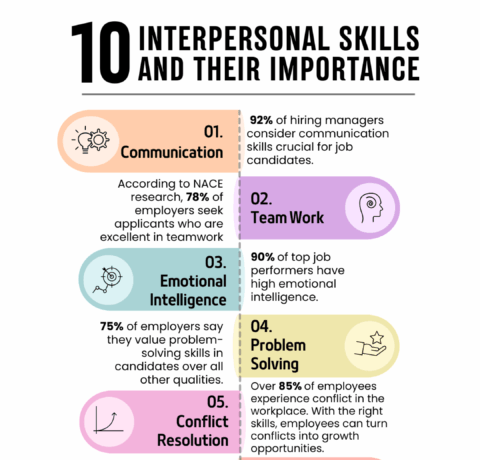Why do Human Beings Engage?
26 Impulses that Sustain Engagement Infographic
What does real and authentic engagement look like- for students and adults? How can we create and sustain high levels of engagement? Why do people engage in learning something? What are some ways educators and education leaders can structure learning experiences to optimize engagement? And finally, what does all the brain research say about engagement? The 26 Impulses that Sustain Engagement Infographic presents 26 instincts that motivate a commitment of time and energy.
There are many factors that motivate engagement. They are all context dependent variables and often act in concert (e.g., safety promotes agency which encourages curiosity). Engagement of any sort starts with a safe supported climate — if basic needs aren’t met you won’t engage anyone.
Each stimuli is unique for each person and each person responds based on a unique motivational profile. Nevertheless it’s worth attempting to identify the root motivations for engagement to become more intentional about creating sticky experiences.
Following are 26 instincts that motivate a commitment of time and energy:
- Compliance.
A sense of duty or obligation; assignments that contribute to a goal; assignments from an assignor that counts (as a result of affection or consequence). Likely to produce procedural engagement. - Gap Awareness.
Exposure to high standards or quality performance may motivate improvement; quantified self data compared to your own performance or top performers. Bob Lenz, Buck Institute, said, “Once a new group sees the previous bar that has been set they are highly motivated to beat it not copy it; they have a clear understanding of what they need to learn to do it and their sense of competition inspires high engagement.” - Curiosity.
Time and permission allow curiosity to flourish. Asking good questions rather than providing quick answers can bolster curiosity. - Intrigue.
Novelty and variety can spark curiosity. If curiosity is intrinsic, intrigue is an external stimuli that sparks interest, makes a connection, initiates engagement–and intrigue expert Sam Horn suggests a good three part question to do all three. - Challenge.
A well constructed task, prompt, or status check can promote critical thinking and engagement. Periodic performance challenges (e.g., game, race, concert, recital, speech, demonstration) can produce positive stress and sustained engagement. A well constructed task promotes conceptual not just procedural understanding. - Craftsmanship.
Doing things well, taking pride in quality. The desire to develop a quality product, driven by a mixture of intrinsic and extrinsic factors, can encourage engagement. Constructive intermediate feedback on a production task can promote persistence and improve performance. - Contribution.
Creating something of value, beauty, importance for the world. Ron Berger, Expeditionary Learning, noted that the act of production can yield a combination of craftsmanship (#5) and contribution. - Authentic.
John Larmer, Buck Institute, discusses the importance of real and authentic work, “Work has a direct impact on or use in the real world.” That suggests work focused on real problems, producing real products of real value, for real audiences. Bob Lenz said, “Fostering curiosity through inquiry and allowing students to choose their topic or product has proven to make a difference in motivation.” - Reflection.
Periodic reflection builds appreciation for progress made. Building a portfolio of production artifacts, a sash of badges, or a collection of digital tokens denotes progress. - Consequence.
Stressing why content matters, says game-based learning expert Sasha Barab, can produce consequential engagement where learners may even develop a sense of pride that that they used their knowledge and skills to achieve meaningful ends. - Fear.
Related to compliance (#1) and the negative side of consequence (#9), fear can capture and keep attention. It may be fun at the movies, but it’s not a constructive long-term engagement strategy. - Burn.
People with a fire lit under them. Dave Potter, VIF International Education, suggested that this burning desire is a combination of frustration, passion, outrage for a Cause (#24), Consequence (#10), and Challenge (#5). If too much anger is involved, a burning passion can be corrosive and flame-out quickly or turn into vengeance. - Collaboration.
Encouraging two or more people build, attempt, or learn something together can boost engagement by creating a shared goal and it can enhance knowledge creation by sharing experiences and taking on asymmetry roles. - Competition.
The observation of growth, goal accomplishment, and competition with others can be highly motivating for some. Public recognition (on a leaderboard or in article) can motivate performance and persistence for some. - Flow.
Meaningful practice can create what Mihaly Csikszentmihalyi called flow, an intense and focused concentration where time seems to stand still. - Fun.
According to a global Nielsen Survey of Trust in Advertising almost half of the respondents said that humor resonates with them more than any other content approach. Many people enjoy the challenges, positive associations, and unexpected rewards of games. - Agency.
The ability to control some context variables, to direct one’s own experience, develops a sense of ownership and can be highly motivating through challenge growth progressions. Real voice and choice can be highly motivating. - Teaching.
Extending one’s self to support the growth of another (Scott Peck’s definition of love) can be highly rewarding. Teaching, modeling, and coaching have the side benefit of reinforce learning and developing a more robust mental model. Teach Justin Wells has students model Bill Nye and write a science paper, make a video, and teach a lesson. - Empathy.
Most people have some ability to understand or feel what another person is experiencing. Tapping into this emotion can be an emotional hook to initiate engagement - Narrative.
A great story connect people. It often deploys intrigue (#4), develops empathy (#19). Storytelling is connecting shared values. Unlocking the power of fiction, visual literacy can be compelling. - Feedback.
Katie Salen, Institute of Play, talks about games as an “invitation with a contract.” Alan Gershenfeld said designing an effective invitation is a real craft. Once an individual is initially engaged and starting to make progress, the quality and timing of the feedback (through technology, peers, teachers, mentors or some combination) can be the difference in whether someone stays engaged or not. - Affection.
The pursuit of affection for a person, place, or thing can yield short-term infatuation or sustain long-term engagement. In a recent blog, Bob Lenz talks about his experience as an athlete and how his coaches used structures and high expectations to engage and motivate him. Lenz said he and his teammates were motivated by the coaches they loved to new heights in performance. - Reward.
Compensated contribution is can produce sustained engagement. That’s what makes prizes so efficient (but paying students for grades has mixed results). - Cause.
Contributing to a cause contributes to a sense of altruism. Reward may be intrinsic and/or external recognition for contribution (#8). In Drive, Daniel Pink said motivation was a function of autonomy (#13), mastery (#5) and purpose. A sense of personal mission and goal attainment can add to a sense of purpose. - FOMO.
The “fear of missing out,” a pervasive apprehension that others might be having rewarding experiences from which one is absent. - Connection.
Building a network can be a motivating goal related to a sense of belonging, social status, and/or interest in monetary reward.







You can adjust your cookie preferences here.